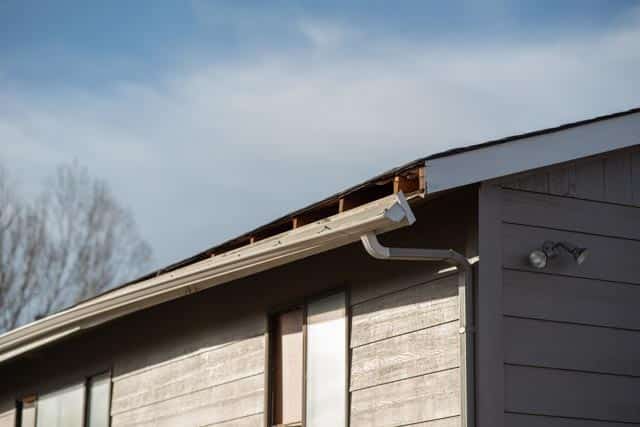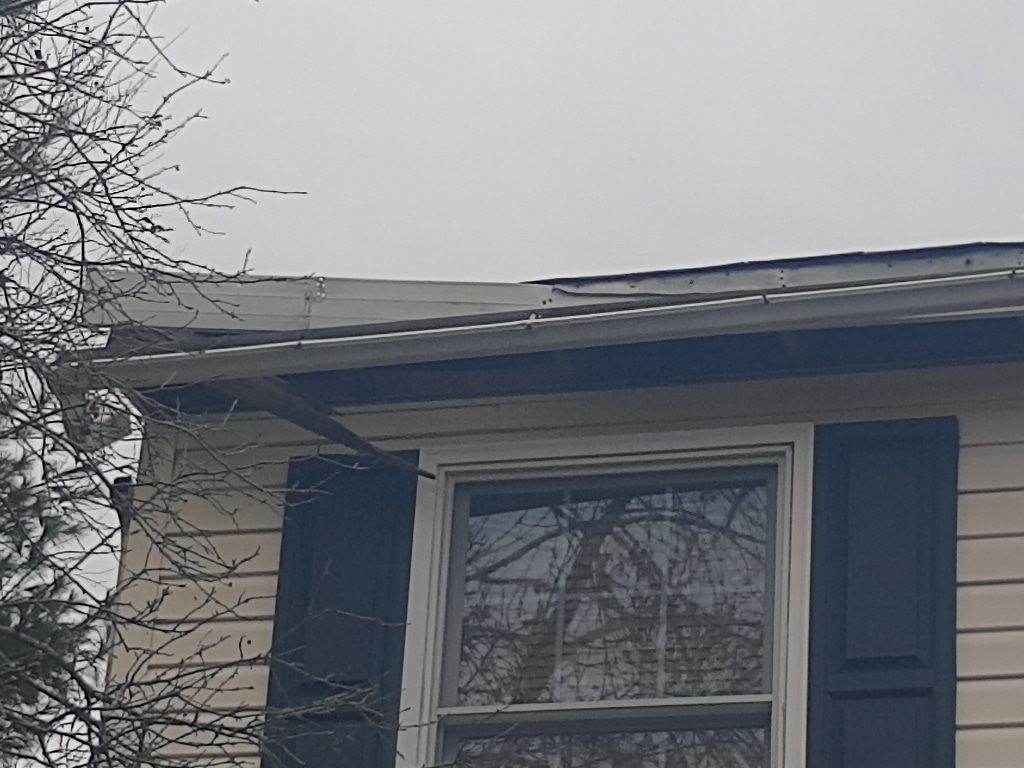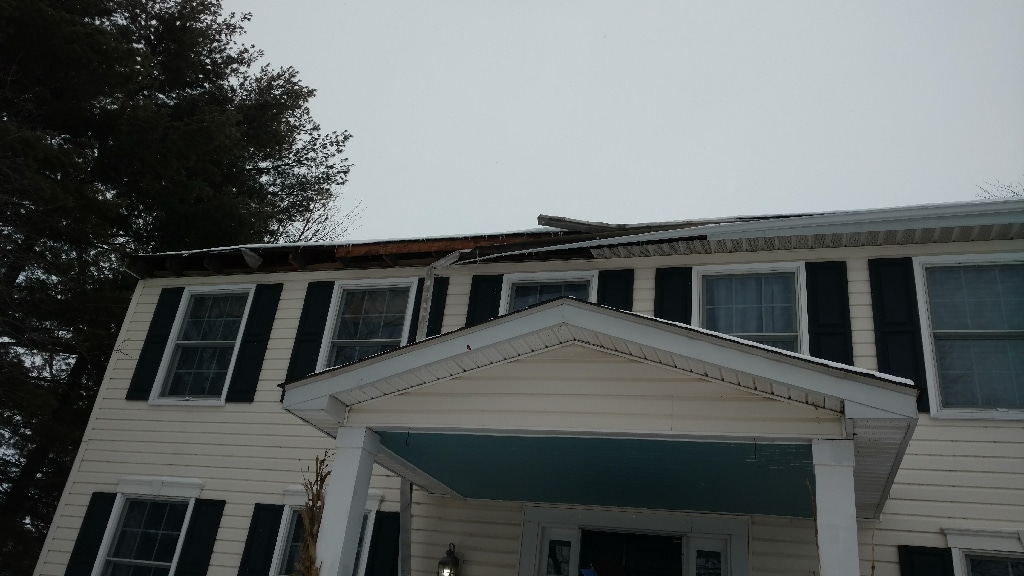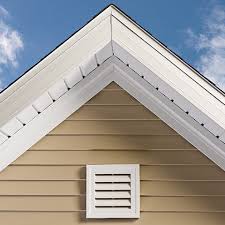Fascia boards play a crucial role in not only enhancing the aesthetics of your home but also protecting its structural integrity. Yet, this vital component often goes unnoticed and underappreciated until it falls victim to the relentless forces of nature.
Water damage, one of the most common and destructive issues faced by fascia boards, can lead to rot, decay, and compromised structural stability. Fear not, for there exists a formidable solution that can shield your roof fascia board from water-related woes – the ever-reliable fascia wrap.
In this article, we delve into the importance of fascia wrap solutions and how they can safeguard your fascia boards, ensuring their longevity and maintaining the beauty and strength of your home for years to come.
What is a Fascia on a House?

Fascia board is the wood trim installed along the roofing edge of your home. Fascia boards are often made of wood which is highly prone to water damage from water going behind the gutters. Over time it always rots away and deteriorates. Eventually the gutters fall down.
What Does A Fascia Board Do?
The main purpose of a fascia board is to protect the exposed opening left by your roofing rafters. Without fascia board the water, animals, and bugs would get into your roof and attic.
What Happens When Your Fascia Board Is Rotting?
Because of their location on your home, fascia boards are prone to water damage and end up becoming soft over time and falling apart. Eventually, your gutters could fall off of the home if your fascia board becomes overly damaged. In the photo below you can see a gutter attached to fascia board. The fascia board itself is starting to come loose.

How Can You Protect The Fascia Board From Damage?
Preventing all water from contacting your fascia board will help it last 2 to 3 times longer than an unprotected fascia board would. In short, you need to protect your fascia board from water damage so it can protect your home from water damage for longer as well.
To protect and prolong the life of your fascia board, there is an option to have it wrapped with aluminum or vinyl material. Ensuring that no water gets to the wood will allow it to last 20 years or more.
We all buy protective skins for our electronics to make them more water proof or shock proof. Wrapping your fascia with aluminum or vinyl is the same idea. The new layer of material forms an impenetrable shield that blocks all water from getting to the wood. Basically what it does is keep the wood completely dry.
What is a Fascia Wrap?

Fascia Wrap also know as “Fascia Capping” is basically a protective layer of material that shields your fascia board from water damage. Fascia Capping or Wrap is commonly made from aluminum or vinyl material.
Here at My Gutter Pro we don’t use any vinyl products. We only use aluminum material for our wrap, so this article primarily describes aluminum fascia wrap in particular. However, vinyl material should have the same steps as the aluminum. It does also need to be bent into shape just like aluminum.
New Fascia Wrap Installation
To bend the aluminum into a shape to fit around the roof fascia board, we use what is called a “Break”. It is the same piece of equipment that is used to custom bend siding for homes exteriors.


- First, for a 1×6″ Fascia Board, we would first measure and cut the aluminum into 7 inch strips. (9″ for 1×8″, 11″ for 1×10″, etc…)
- Next we would measure and score another line at the 1 inch mark and then break, or bend the aluminum into a 90 degree right angle.
- Once you bend all of the aluminum fascia wrap to shape, you are ready for the actual installation. You can install fascia wrap to your existing fascia board that is already on the home, or you could also add fascia wrap to new fascia board that is being installed.
- If you are adding the wrap to your existing fascia board that is already on the home, first you’ll need to remove all of the gutters and hardware. You will need the fascia to be clean of any nails, screws, debris, etc.. that could prevent the wrap from sitting flush against the wood.
- Lastly, you would sit the wrapping onto the fascia so that the 1 inch part rests over the top edge of the fascia board. Make sure that the wrap fits snug on the fascia board and use screws to mount the wrap to the fascia.
Fascia Wrap Replacement


For homes that are having new fascia installed with fascia wrap, the first step is to remove the existing fascia board and all nails, screws, hardware, etc… Next you would install the new fascia board without the wrap. That way you can see what you are doing. Lastly you would place the fascia wrap onto the new fascia so that the wrap covers all of the wood, and then screw the wrap into place.
How Drip Edge And Fascia Wrap Work Together

Drip Edge is a very important component of the gutter system. It’s purpose is to cover the gap between the shingles and gutter so that no water can go behind the gutter. It also guides the water into the gutter

Drip edge covers the gap under the shingles between the roof deck and gutter. It prevents water from going under the shingles and behind the gutter. Whereas fascia capping protects the fascia itself only. Without drip edge, water can still go behind the gutter and into the walls. The Fascia Capping would still protect your fascia though. If you could only afford one, drip edge is by far more important.
Drip Edge Warning
If your home has Fascia Wrap installed or you are thinking of having it installed… There is one very important thing to know. You MUST have drip edge properly installed if you have fascia wrap. All homes should always have drip edge properly installed, but with fascia wrap it is imperative.
When your fascia board is wrapped it is completely covered and you are not able to see the wood. Therefore, if the wood is starting to rot you’ll never know until it’s too late. What usually happens here is the gutters will pull loose first. Next the fascia wrap will disconnect from the roof fascia board. In the 2 photos below you can see the fascia wrapping sticking up in the air and a shard of fascia hanging from under the gutter. This gutter fascia is completely rotted and has fallen apart. Basically the gutter is being held up by the downspout at this point as there is no wood behind it.


In the next two photos you can see the gutter eventually fell off the entire front of the home. What has happened here is the roof fascia board rotted away behind the fascia wrap. Because of the wrap nobody was able to know there was even a problem until it was too late. The above photos were taken one month before the below photos.


Just to clarify, the above home did not have drip edge installed to the entire home. The water had been going behind the gutter and destroying the gutter fascia board. Who ever installed the fascia wrap did not install drip edge and the end result was a total disaster.
Protecting Your Fascia Board with Rake Wrap
In the two photos below you will see examples of “Rake Board”. They are basically the same thing as fascia board. They cover the gap left from the rafters. The difference between rake board and fascia board is that rake boards are slanted, and fascia boards are straight. Because rake boards are always slanted, there are never any gutters on them.


You can have your rake board wrapped just the same as your fascia board. The wrap will protect the rake board just the same as it protects the fascia board and help it last 2 to 3 times longer.
Conclusion

We always suggest wrapping new wood only. If you wrap wood that is 10 years old or more, it could start deteriorating within a few years and you won’t now until it is too late. Adding wrap to old fascia board is not a viable way to squeeze more life out of your fascia.
Wrapping your fascia board can help it last two to three times longer than it would otherwise. However, if you don’t have drip edge then wrapping will make it worse. Therefore, always be sure that your fascia wrap and drip edge are properly installed and configured by a professional.
As always, keep an eye out for anything that doesn’t look correct after doing any repairs to your roofing edge and gutter system.
Check out My Gutter Pro’s Official blog spot “Talking Gutters” for more informative articles.
CLICK HERE to email My Gutter Pro




6 Responses
I think the admin of this web page is genuinely working hard in favor of his web
site, since here every data is quality based stuff.
I enjoy the efforts you have put in this, thank you for all the great content.
Very neat blog post. Will read on…
Thank you for the information but now I have questions about a contractor that started working on my house yesterday. (It’s the reason I searched for information on the proper installation of aluminum fascia and how i found your article)
We had severe hail damage and are having the roof, gutters, fascia and downspouts replaced. They tore the roof off but did not replace the drip edge/gutter apron as they were supposed to, but left the original drip edge on. They installed ice and water shield along the eaves (over the old drip edge), completed the roof and then started to cover the fascia with new aluminum after removing the original damaged aluminum.
When I told them they were supposed to have replaced the original drip edge/ gutter apron before they started to reshingle (per the insurance and contract) they stated they would put a new drip edge under the shingles but on top of the new ice and water shield so it would cover (hide) the original drip edge/gutter apron and it would be “extra protection” (their words), because we still had the original aluminum drip edge and now this new aluminum over the top of it. I have never heard of this before and when I asked if it will pass code if I called and asked the building inspector to stop by they began a bunch of double talk. They actually started to cut the old gutter apron off at the bend where it comes out from under the ice and water shield and bends down into the gutter, making the situation worse and told them to stop.
They are not done but we looked at the work at the end of the day and noticed another issue. The aluminum they are using to recover the fascia board does not extend all the way to the top of the wood fascia board but stops 1 to 2 inches from the top, which leaves 1 to 2 inches of raw wood exposed behind the new (and old) drip edge/gutter apron after the gutters are installed. I can only imagine the amount of water that could splash up into that area during heavy rains or freeze and thaw cycles. And once water goes over the top of that aluminum (because it is 2″ too short) it’s going to be trapped between the aluminum and the wooden fascia leading to heavy rot over time.
So in my opinion they just broke your two very important rules that the drip edge and fascia covering are a system that work together, and in my case neither is done right. I can tell them to stop now and do no more work until this is resolved but I have a house with no gutters and they are looking at a lot of rework in my opinion. How do I convince this contractor this work is not done correctly and needs to be redone? I need to site codes or he wont listen, and finding your site is helpful but doesn’t carry the weight of the building code (though I agree 100% with everything you have written). Do I call up the city building inspectors and ask for them to come by and weigh in on this? Or ask for the police to come and arrest them for ‘impersonating” a legitimate contractor!?
We are in desperate need of 6″ fascia classic blue aluminum wood grain finish. Where can we get it?????
Donna,
Fascia board is located at Lowes or Home Depot. It mostly only comes in white which is the primer.
The colors are then painted on. Hope this helps.
My Gutter Pro